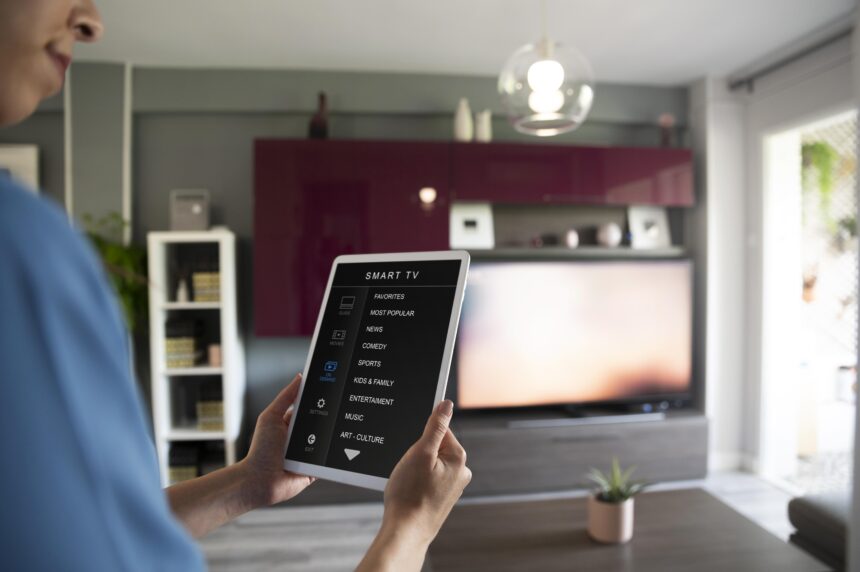In recent years, smart home systems and technology have become increasingly popular among homeowners. From smart security systems to automated thermostats and voice-controlled assistants, these innovative devices offer convenience, energy efficiency, and enhanced home security. However, it’s important for homeowners to understand how their home insurance policy covers these smart home systems and technology. Here’s a guide to help you understand home insurance for smart home systems:
- Review Your Policy Coverage: Start by reviewing your home insurance policy to determine the extent of coverage for smart home systems. Understand the terms, conditions, and limitations associated with these technologies. Pay attention to any exclusions that may exist and the coverage limits for electronic equipment or home improvements.
- Understand Property Coverage: Home insurance typically provides coverage for property damage caused by covered perils, such as fire, theft, vandalism, or natural disasters. Smart home devices and systems, including sensors, hubs, cameras, and thermostats, may be covered under the property coverage section of your policy. Make sure you are aware of the coverage limits and deductibles that apply to these devices.
- Consider Additional Coverage: If the coverage limits for smart home devices and systems under your standard home insurance policy are insufficient, you may need to consider additional coverage options. Some insurance companies offer endorsements or add-ons specifically designed to cover higher-value electronic equipment, including smart home technology. Talk to your insurance provider to explore these options and ensure that your devices are adequately protected.
- Liability Coverage: Smart home systems often include security cameras, doorbell cameras, and other monitoring devices that can capture footage of your property. This surveillance can provide valuable evidence in the event of a break-in or other incidents. However, it’s important to understand the implications of recording and storing footage. Liability coverage under your home insurance policy may protect you if someone claims their privacy was violated by the use of your smart home technology. Review your policy to ensure that you have appropriate liability coverage for potential privacy-related claims.
- Cybersecurity and Data Breaches: Smart home systems rely on internet connectivity and may store personal data or transmit it to the cloud. It’s crucial to protect your smart home devices from cybersecurity threats and potential data breaches. Check if your insurance policy includes coverage for cyber liability, which can help cover the costs associated with data breaches, identity theft, or other cyber-related incidents involving your smart home systems.
- Preventive Measures: Taking preventive measures can help reduce the risk of incidents and potential insurance claims. Secure your smart home devices by using strong, unique passwords, enabling two-factor authentication, and keeping firmware and software updated. Regularly check for security vulnerabilities and apply necessary patches or updates provided by the manufacturers. These proactive steps can help mitigate risks and demonstrate to insurers that you are taking appropriate measures to protect your home and smart technology.
- Consult with Your Insurance Provider: If you have questions or concerns about the coverage of your smart home systems and technology, consult with your insurance provider. They can provide guidance on the specific coverage available under your policy, explain any endorsements or add-ons that may be necessary, and address any potential gaps in coverage.
- Keep Records and Documentation: Maintain a detailed inventory of your smart home devices, including their make, model, and value. Keep receipts, photographs, and any other relevant documentation that can be useful in the event of a claim. This documentation will help streamline the claims process and ensure that you receive appropriate compensation in case of damage, loss, or theft.
- Understand Usage Requirements: Some insurance policies may have requirements related to the usage and monitoring of smart home systems. For example, your policy may require that you activate and use security features, such as burglar alarms or surveillance cameras, when you are away from home. Failure to adhere to these requirements may result in limitations or exclusions in your coverage. Understand the usage requirements specific to your policy to ensure full compliance.
- Periodic Policy Reviews: As your smart home technology evolves and you add or upgrade devices, it’s important to periodically review and update your home insurance policy. Inform your insurance provider about any significant changes in your smart home systems to ensure that your coverage remains adequate.
In conclusion, understanding home insurance for smart home systems and technology is crucial for homeowners who have invested in these innovative devices. Review your policy, consider additional coverage options, understand liability coverage, protect against cybersecurity threats, consult with your insurance provider, keep records, and periodically review your policy to ensure adequate coverage. By taking these steps, you can enjoy the benefits of your smart home technology while having peace of mind knowing that you are properly protected.










